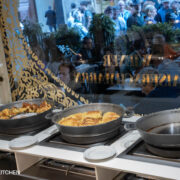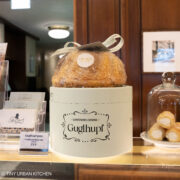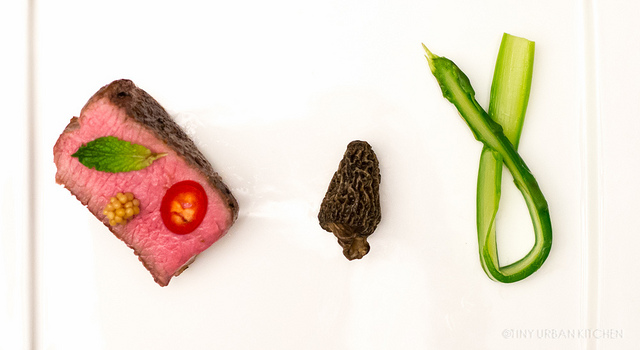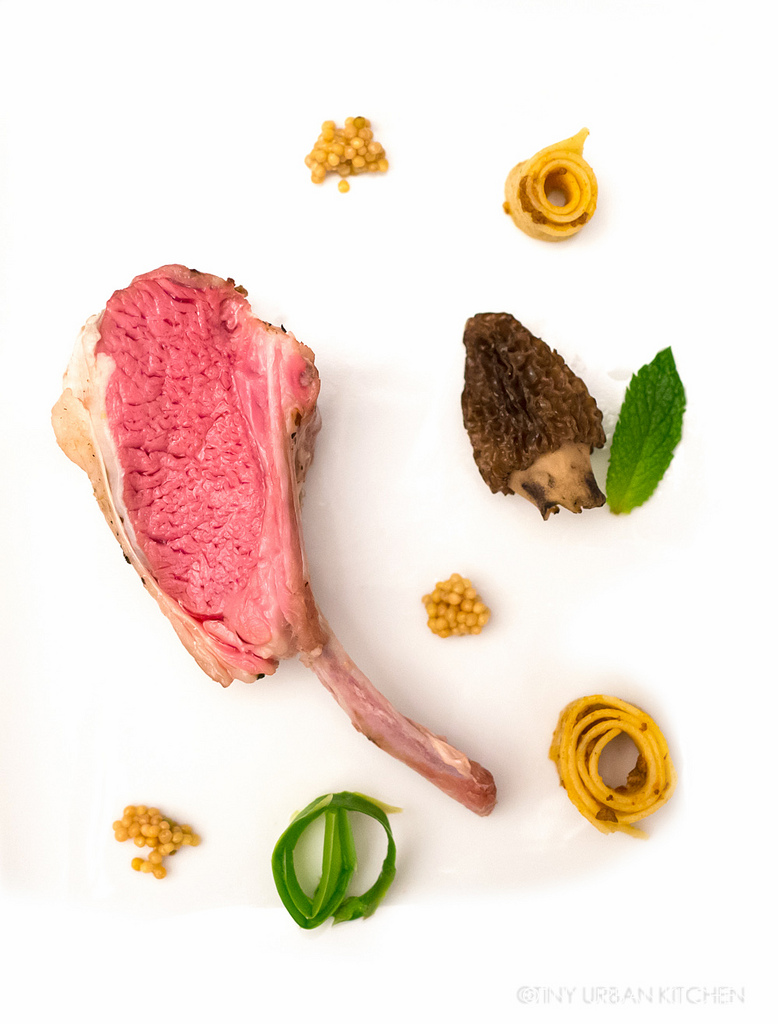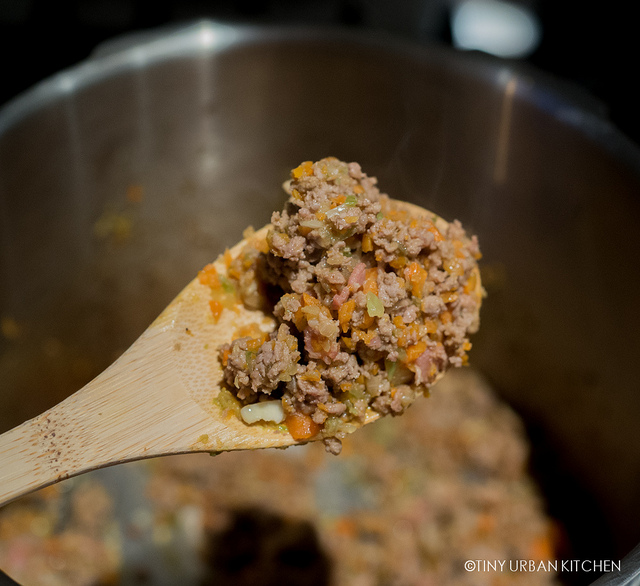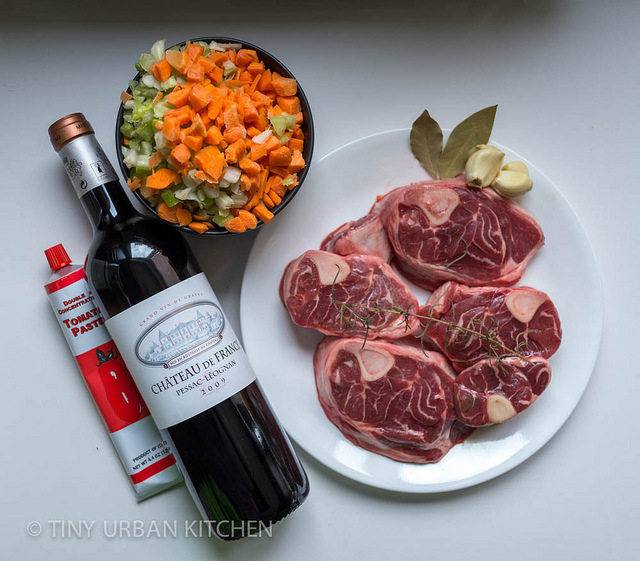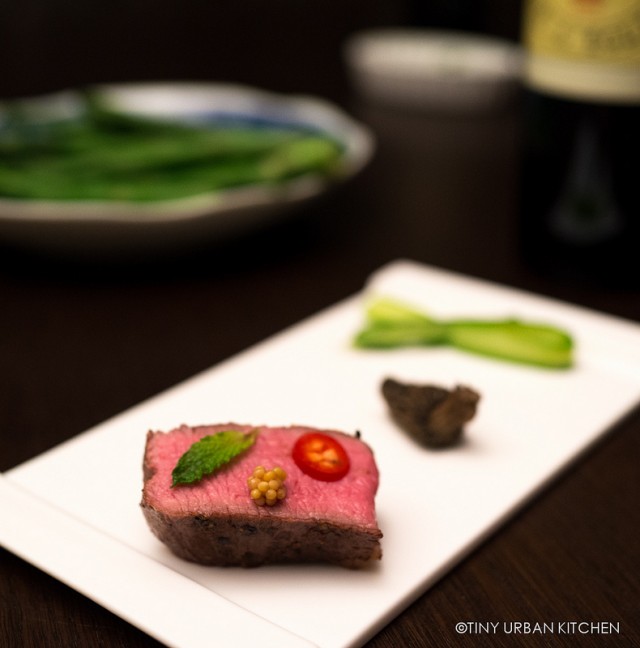
I'm sure most people's culinary worlds expand after marriage.
After all, it's unusual for two people to have exactly the same palate, upbringing, and preferences when it comes to food. Inevitably, your tongue will be opened to a wider variety of flavors when these two worlds collide.
Case in point: When Bryan and I first got married, I mostly cooked Chinese food, with a bent towards Taiwanese cuisine. It was the food I grew up eating, and I was comfortable cooking it. As time has gone by, in an effort cater to Bryan's palate, I've moved towards cooking a broader range of food, such as trying to perfect his favorite pasta dishes, making way more steak than I ever would have on my own, and . . . . learning how to cook lamb.
I never really liked lamb because I've always found it to be a bit too gamey. However, for the sake of my husband, I've been dabbling in trying to learn more about how to prepare perfect lamb. In honor of Lamb Lover's Month in partnership with the American Lamb Board, I had the opportunity to explored several lamb dishes this weekend. Bryan was thrilled to eat so much lamb while enjoying some of his favorite bottles of red wine at home.
Me? I'm excited to continue expanding my repertoire of dishes I can make.
And maybe, just maybe, I am finally starting to enjoy lamb.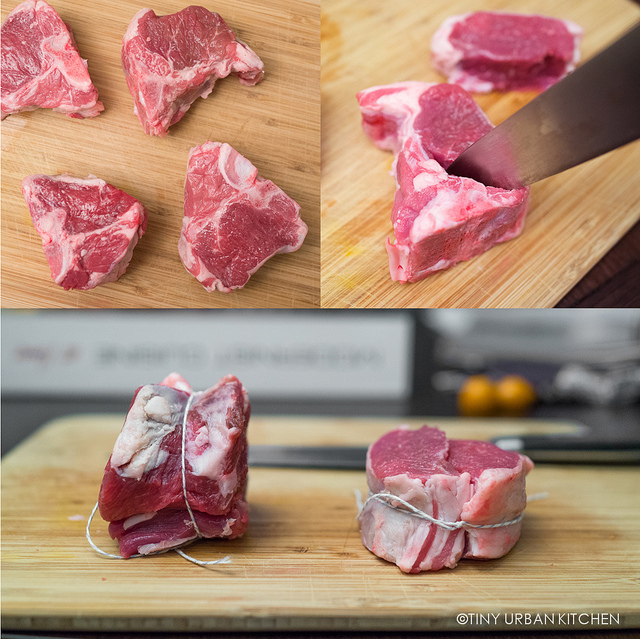
The American Lamb Board provided me with some lamb loin chops with which to "play" to celebrate Lamb Lovers Month. Most lamb sold in the US is either locally raised or imported (mostly from Australia or New Zealand).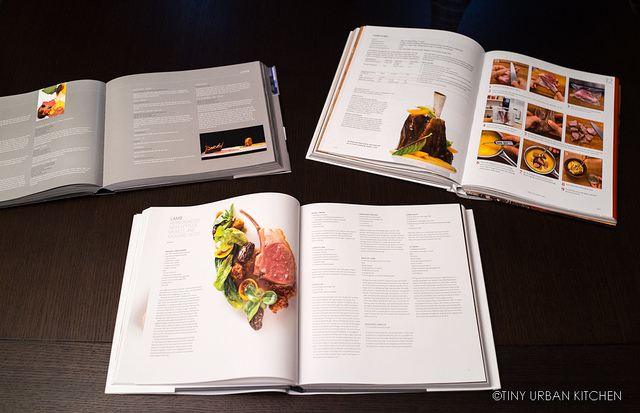
To prepare, I pored over books by Grant Achatz (Alinea cookbook), Daniel Humm (Eleven Madison Park cookbook), and Nathan Myhrvold (Modernist Cuisine at Home) looking for inspiration. I soon realized that most of these dishes were not suited for the home cook, requiring a plethora of complex components as well as fancy equipment.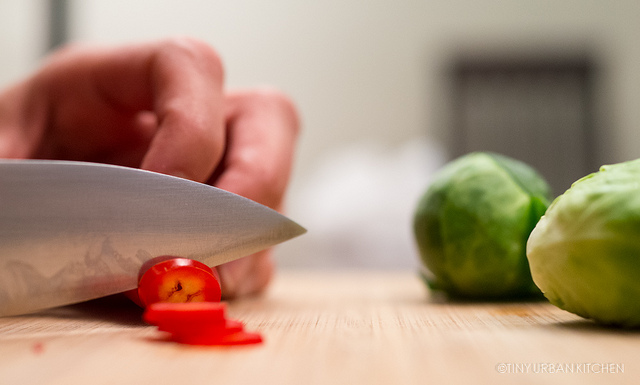
However, after reading some of these recipes, I was surprised to see that oftentimes, the preparation of the main protein is not necessarily complex. More often than not, it's the creative combination of side ingredients and their flavors that make these dishes three-star Michelin quality.
So I decided to draw inspiration from one of these recipes but simplify it for the home cook. I chose Grant Achatz's "Lamb in Cubism" recipe, incorporating his ideas of whimsically accenting sous vide lamb loins with mint, braised mustard seeds, and red jalapeno chilies.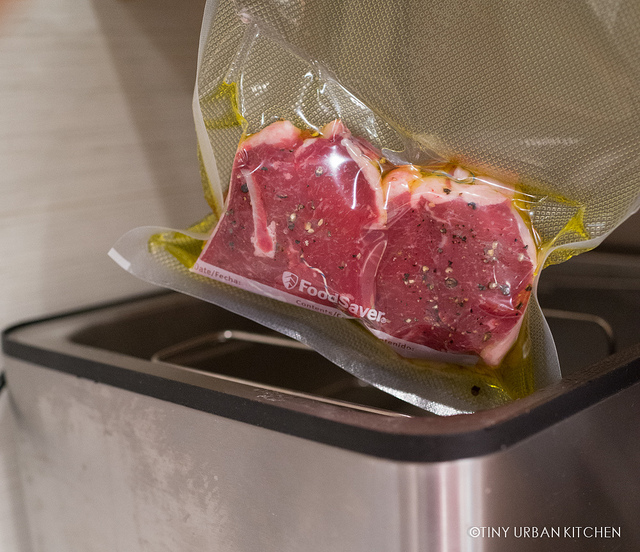
I do own one piece of slightly "fancy" equipment that I decided to use - my sous vide machine. It makes cooking lamb to a perfect medium rare absolutely brainless. Just set the temperature and cook the vacuum sealed lamb (seasoned liberally with salt, pepper, and olive oil), for about two hours.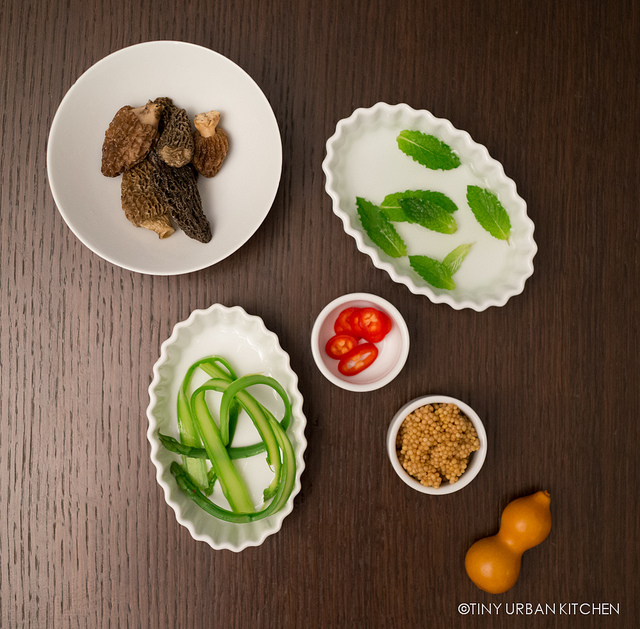
Lamb makes me think of spring, so I decided to add a few more "spring-like" accompaniments to the meal, like butter sauteed morel mushrooms and lightly blanched asparagus ribbons (please see this post for recipes on how to make those components).
After briefly searing the sous-vide cooked lamb (just to brown it), top each slice with a tiny mint leaf, braised mustard seeds, and a slice of chili. Optionally serve with morel mushrooms and asparagus ribbons.
Serve!
Thoughts
We were all really impressed with the tender texture of the American lamb. Sous vide is seriously an awesome and foolproof way of preparing lamb. It comes out perfectly each time.
American lamb is definitely much milder than Australian or New Zealand lamb. For those that don't really like the gamey taste of lamb (like me), this lamb is actually tolerable, and, dare I say, enjoyable? Others who love that deep, grassy lamb-y flavor (like one of my guests Sunday evening), may be a bit disappointed. As my lamb-loving friend said, "it's sort of bland." On the other hand, her husband, who usually hates fat on meat, actually thought the fat on this lamb tasted decent.
So, it really depends on whether you like that distinct, gamey flavor of lamb. If not, you may actually want to give American lamb a try before writing off lamb completely.
Other facts: American lamb are also bigger than Australian or New Zealand lamb, so the cuts of meat are generally larger and meatier. A majority of American lamb is finished ("fattened") with grain, which contributes to a more tender and milder meat flavor. Contrast this with lamb from Lamb New Zealand and Australia, which is typically grass-fed (and thus gamier) and likely leaner. On a recent trip to Whole Foods Market, I found lamb from both New Zealand and Maine.
Lamb Loin with Chili, Mint, and Mustard Seed
Serves 2-4 people
Inspired (but severely adapted) from Grant Achatz's Alinea
Lamb Loin Chop
4 lamb loin chops
salt and pepper to taste
1 T olive oil
4 mint leaves
1 teaspoon braised Mustard Seed (see below)
Cut lamb loin meat away from the bone. Set aside bones for other use (e.g., making stock). Tie together two loin sections into a cylinder with twine. Generously salt and pepper all sides of the lamb loin. Cook sous vide with olive oil at 55 °C (130 ° F) for two hours. Remove lamb loin from bags. Quickly sear the edges in a very hot cast iron pot for about 1 minute (or until a nice sear has been formed). Set aside.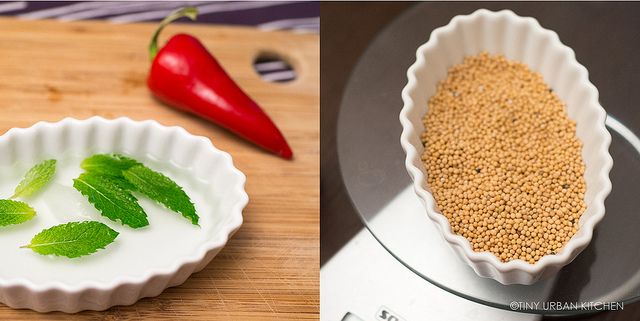
Mint Leaves
Pick out smaller, unblemished leaves and keep in ice water for freshness.
Red Jalapenos
Any red pepper the right size will work, so pick peppers depending on your tolerance of heat. Thinly slice rings and set aside.
Braised Mustard Seeds
50g (1.8 oz) dried mustard seeds
50g water
5g white wine vinegar
3g sugar
1g Kosher salt
Combine all ingredients in a saucepan and bring to a boil. Reduce heat and let simmer for 5 minutes. Cover and let stand for an hour. Water will be completely absorbed and mustard seeds will be plump and tender.
Plating in All Together
Arrange each plate with the following components:
1 slice of lamb loin
1 mint leaf
1 slice of chili
1 dollop of braised mustard seed
Optionally decorate the plate with other components, such as butter sauteed morel mushrooms and asparagus ribbons.
Disclaimer: I received free lamb from the American Lamb Board.
All Rights Reserved











